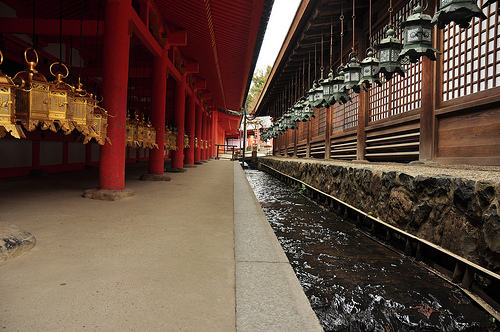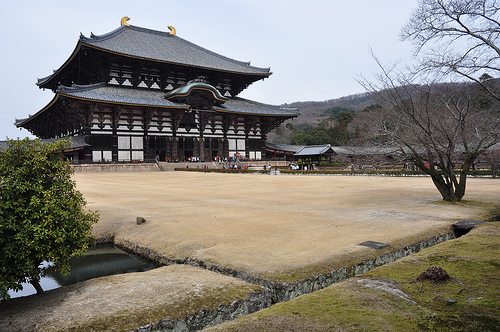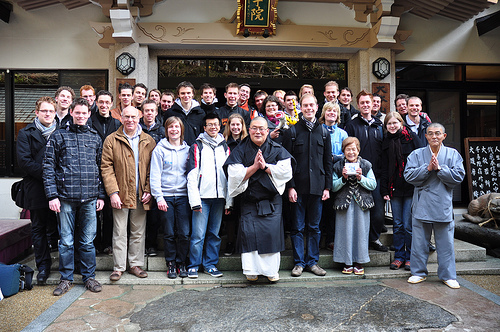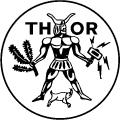News
Day 19: The first day in the last city of our trip
Monday March 14th, 2011 by Celine Vincent
While in other parts of Japan the aftermath of the disaster unfolds, the daily life in Osaka just goes on. Therefore, our program can just go on, and we explored some of the cultural sites Osaka has to offer. We even had the weather on our side: the sun never stopped shining and it was warm enough for everyone to take coats and sweaters off.
We started the day with a visit to the Shitennoji temple complex. This temple is the oldest state temple in Japan, founded by prince Shotoku to promote Buddhism in Japan. Besides the temple itself, there was a pagoda, a treasure house, a turtle pond and a beautiful Japanese garden for us to admire.
In the afternoon we visited the symbol of Osaka: Osaka castle. Rebuilt in 1931, it houses a museum that showcases the history of the castle. We learned that its history involved many wars; not quite unusual for a castle. It was built around 1600 on the site of a temple that was destroyed in war, to be used as the center of rule for Hideyoshi. After his death, the castle was attacked and destroyed by the troops of Tokugawa, only to be rebuilt for their use. Unfortunately, lightning struck and the tower burnt down and was not rebuilt until 1931.
Just as everyone was growing hungry, we travelled to Namba, the city’s most famous shopping and entertainment district. It offered something for everyone in our group, since it has attractions such as the fashionable Amerikamura, the Shinsaibashi Shopping Arcade, Nipponbashi Den Den Town for electronics and manga, and the colorful Dotonbori entertainment district. Here, the group scattered to explore the area and to conclude our first day in Osaka with a tasty meal. Only three more days to go before we depart for the Netherlands again.
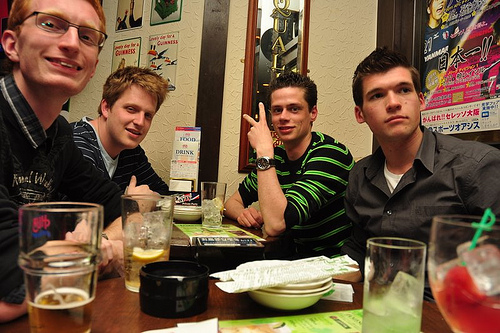
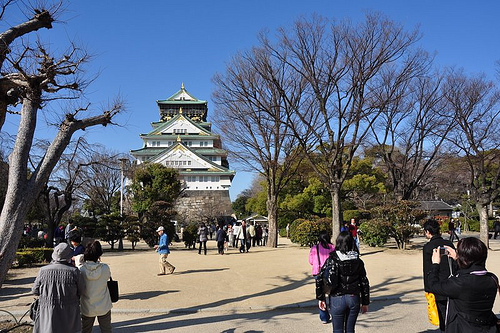
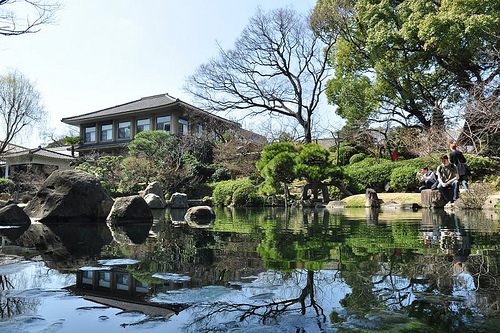
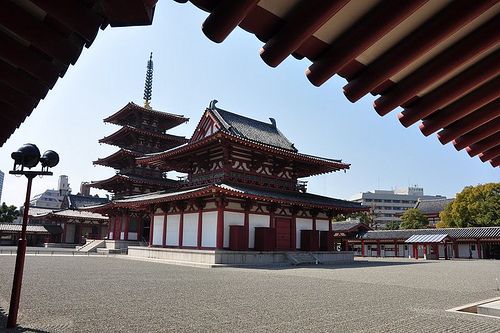
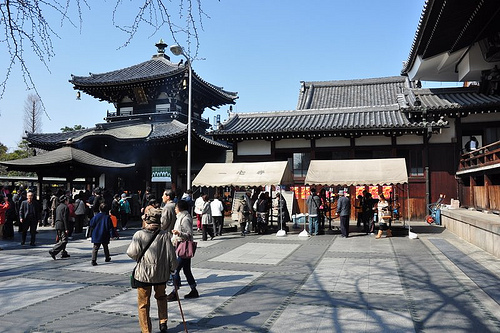
Day 18: Chaos and Peace
Sunday March 13th, 2011 by Giel Op 't Veld
Despite recent events, we woke up this morning at the Senju-in temple at Mount Shigisan. We started the day at 6am for a traditional Buddhist ceremony. Chanting, drums, traditional fires and a less traditional (but tasty) breakfast were just some of the elements of the morning prayer. As Europeans, we know quite little about Buddhism so everything was new to us, including some of the foods!
When we left the temple, still early in the morning, we took some time enjoy the vicinity. The sun was shining, one could not hear a sound and being cut off from television and internet gave us a very weird moment to enjoy total peace and rest, while we knew that the country was in shock.
We continued our program with a visit to Nara, the former capital of Japan. This city is currently celebrating the Shuni-e ceremony, the festival of water and fire, and just like us Nara continued her daily life. The Great Buddha at Todai-ji (24m in height!) was impressive, but also as crowded as one would expect. In addition, we visited the Kofuki-ji temple, which was unfortunately partially undergoing some reconstructions. The rest of the day was off and most of us just strolled through the city which still had a lot to offer. Whether it was visiting the many Buddhist temples, the more authentic districts or just shopping for souvenirs, the participants enjoyed themselves.
We have no clue whether the crowdedness of the city today was normal, but it appeared as if the people of Nara were quite busy preparing for tonight’s celebrations just like every year. This part of the country actually shows very little impact of the earthquake or the aftermath.
Now, we have moved to our hotel in Osaka. We have been reconnected to the internet here so it’s easier for us to follow the news and reply to messages from homea. We have not seen much of the city yet, but luckily we will have time for that tomorrow.
